© Will Pryce
c.威尔·普莱斯
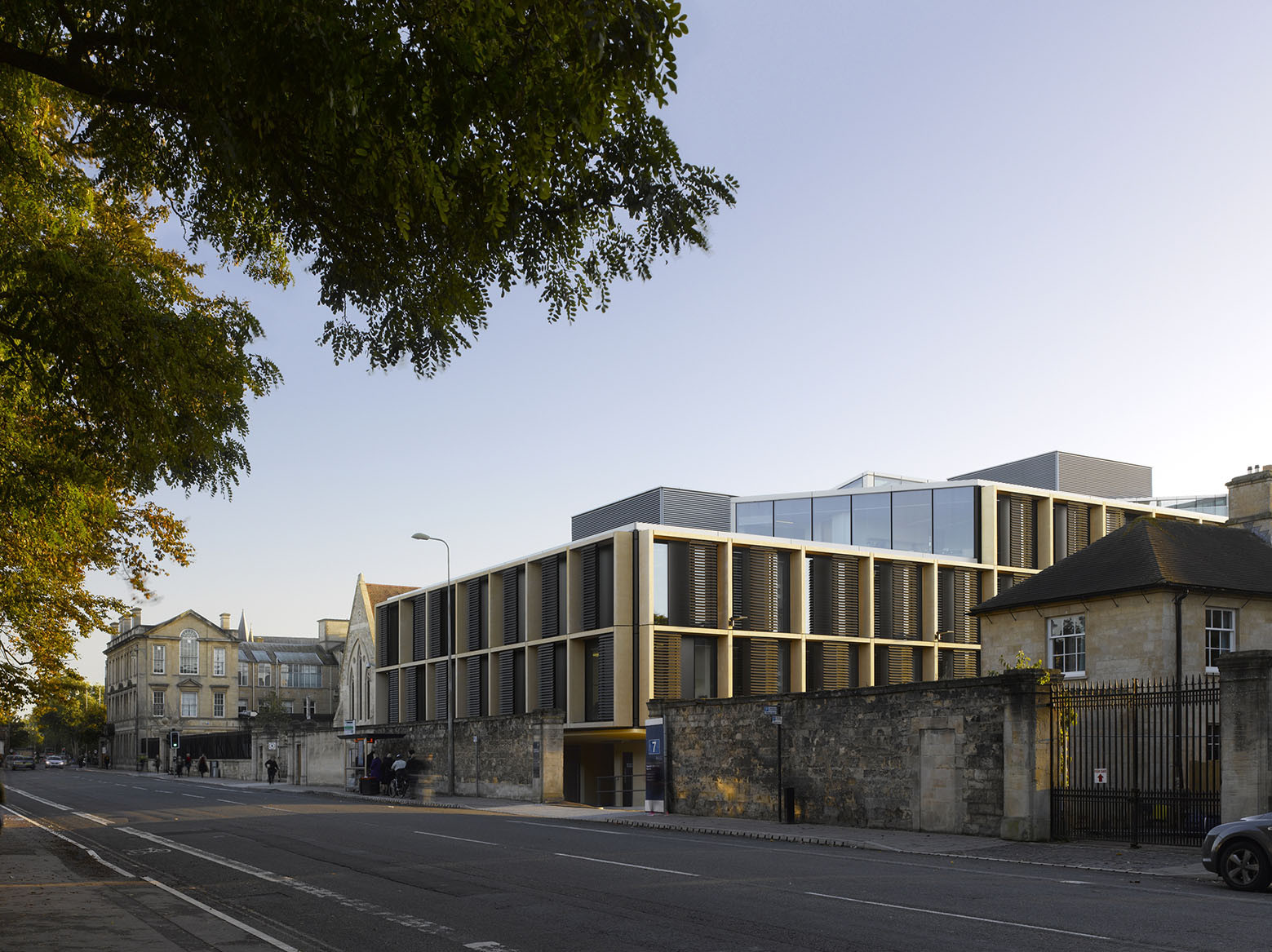
架构师提供的文本描述。这座24,400平方米的新建筑是一座创新的建筑之旅,将作为一个世界级设施内的单一协作环境,旨在适应牛津数学研究小组之间的持续增长和相互作用。
Text description provided by the architects. An innovative and architectural tour-de-force, the new 24,400 sqm building will serve as a single collaborative environment within a world-class facility designed to adapt to continued growth and foster interaction between mathematics research groups in Oxford.
© Will Pryce
c.威尔·普莱斯
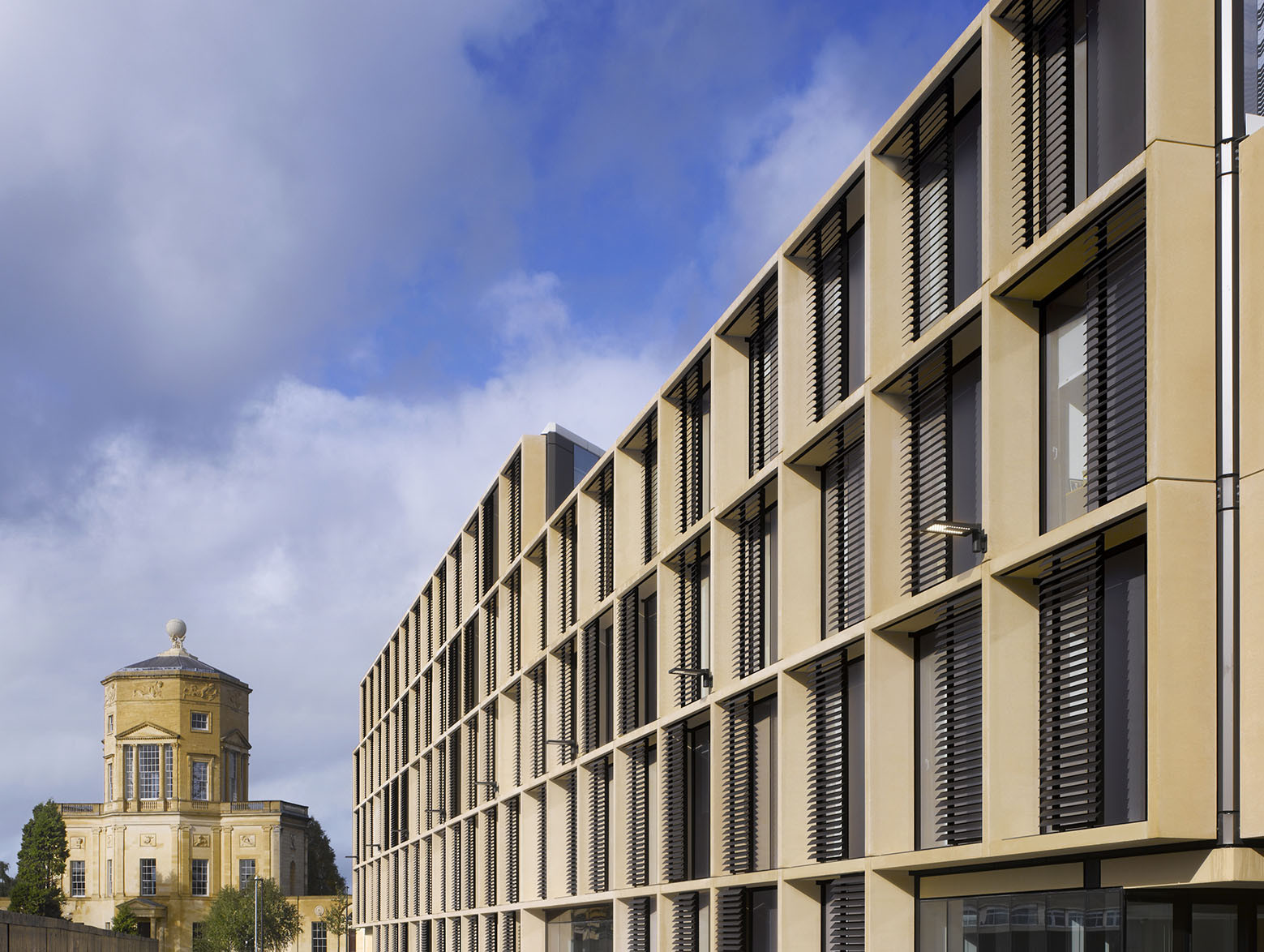
数学研究所最初被分散在四个不同的地点,当时拉斐尔·冯·奥利建筑师被雇来为该部门设计一座新建筑。该署现有的楼宇相当挤迫,没有空间作进一步扩展,而分散的社区亦缺乏一个明确的本科生教学重点,亦令各研究团体及个别人士难以合作。这座新大楼巩固了该部门的多个地点,提供了一个新的重点和身份,以平衡研究人员对隐私的需求和跨学科协作的重要性。数学研究所为500多名学者和辅助人员提供工作空间,并为国际研究员、讲师和本科生提供教育空间。
The Mathematics Institute had originally been dispersed across four different sites when Rafael Viñoly Architects was hired to design a new building for the department. The department’s existing buildings were significantly crowded and offered no further space for expansion, and its dispersed community was in short of a clear focal point for undergraduate teaching, and also made it difficult for the various research groups and individuals to collaborate. The new building consolidates the department’s multiple locations to provide a new focus and identity that balances researchers’ need for privacy with the increasing importance of interdisciplinary collaboration. The Mathematical Institute provides workspaces for over 500 academics and support staff, and provides education space for international research fellows, lecturers and undergraduates.

为了符合牛津大学新拉德克利夫观测区(ROQ)设计的总体规划-拉斐尔·冯·奥利建筑师(Rafael Viñoly Architect)的设计,数学研究所的设计是为了符合“街道和街区”的布局,保持工地上具有历史意义的建筑之间的视觉走廊。设计成两个实心的翅膀,由玻璃的体积连接,它平衡了坚固性和质量与透明度和轻盈度之间的关系。柔和的外部玻璃对历史环境很敏感,但它也增加了建筑的环境性能,平衡了研究人员对办公室隐私的需求和对日光的需求。̧ADE采用可调百叶窗屏幕,以尽量减少太阳增益.
In keeping with the – Rafael Viñoly Architects designed – overall master plan for the University of Oxford’s new Radcliffe Observatory Quarter (ROQ), the Mathematical Institute is designed to conform to the “streets and blocks” layout, preserving visual corridors between the historically significant buildings on-site. Designed as two solid wings connected by glazed volume, it balances solidity and mass against transparency and lightness. The subdued exterior glazing is sensitive to the historic context, but it also increases the building’s environmental performance and balances researchers’ need for privacy in their offices with the need for daylight. The self-shading façade employs adjustable louver screens so as to minimize solar gain.
© Will Pryce
c.威尔·普莱斯
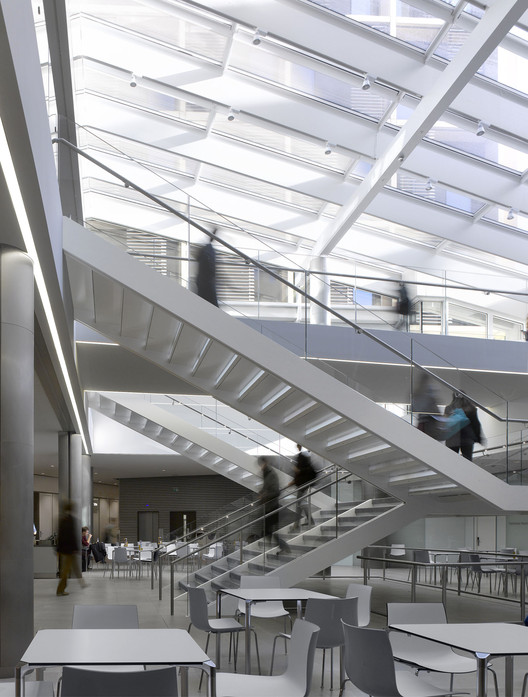
一个有玻璃的中庭和入口大厅保留了拉德克利夫医务室和拉德克利夫天文台之间的视线。就像数学研究本身一样,这座建筑有点内向:它被压抑的外部环境尊重它的历史背景,但中庭,这座建筑的社会中心,是轻盈的,宽敞的,有一个牧师的头顶,将间接的日光带入计划的中心。中庭几乎延伸了整个建筑的长度,并使所有楼层的教职员工之间的视觉连接。一系列的人行天桥和特色楼梯提供了必要的循环,但也动画的多层空间,因为人们可以看到步行在整个建筑物。
A glazed atrium and entrance lobby preserves sight lines between the Radcliffe Infirmary and the Radcliffe Observatory. Like mathematics research itself, the building is somewhat introverted: its subdued exterior respects its historic context, but the atrium, the social heart of the building, is light- filled and spacious, with a clerestory overhead to bring indirect daylight into the center of the plan. The atrium stretches nearly the entire length of the building and enables visual connections between faculty members on all floors. A series of pedestrian bridges and feature stairs provides necessary circulation, but also animate the multi-story space as people can be seen walking throughout the building.
Floor Plan

为了安全和确保研究人员的隐私,建筑物的功能是分层的:教员和同事空间(办公室、会议室等)。地上、学生空间(教室、讲习室和讲堂等)地下,中庭保持它们之间的视觉联系。
For the purposes of security and ensuring researcher privacy, the building functions are stratified: faculty and fellow spaces (offices, boardrooms, etc.) aboveground, student spaces (classrooms, Seminar rooms and lecture theatres, etc.) below ground, with the atrium preserving visual connections between them.
© Will Pryce
c.威尔·普莱斯
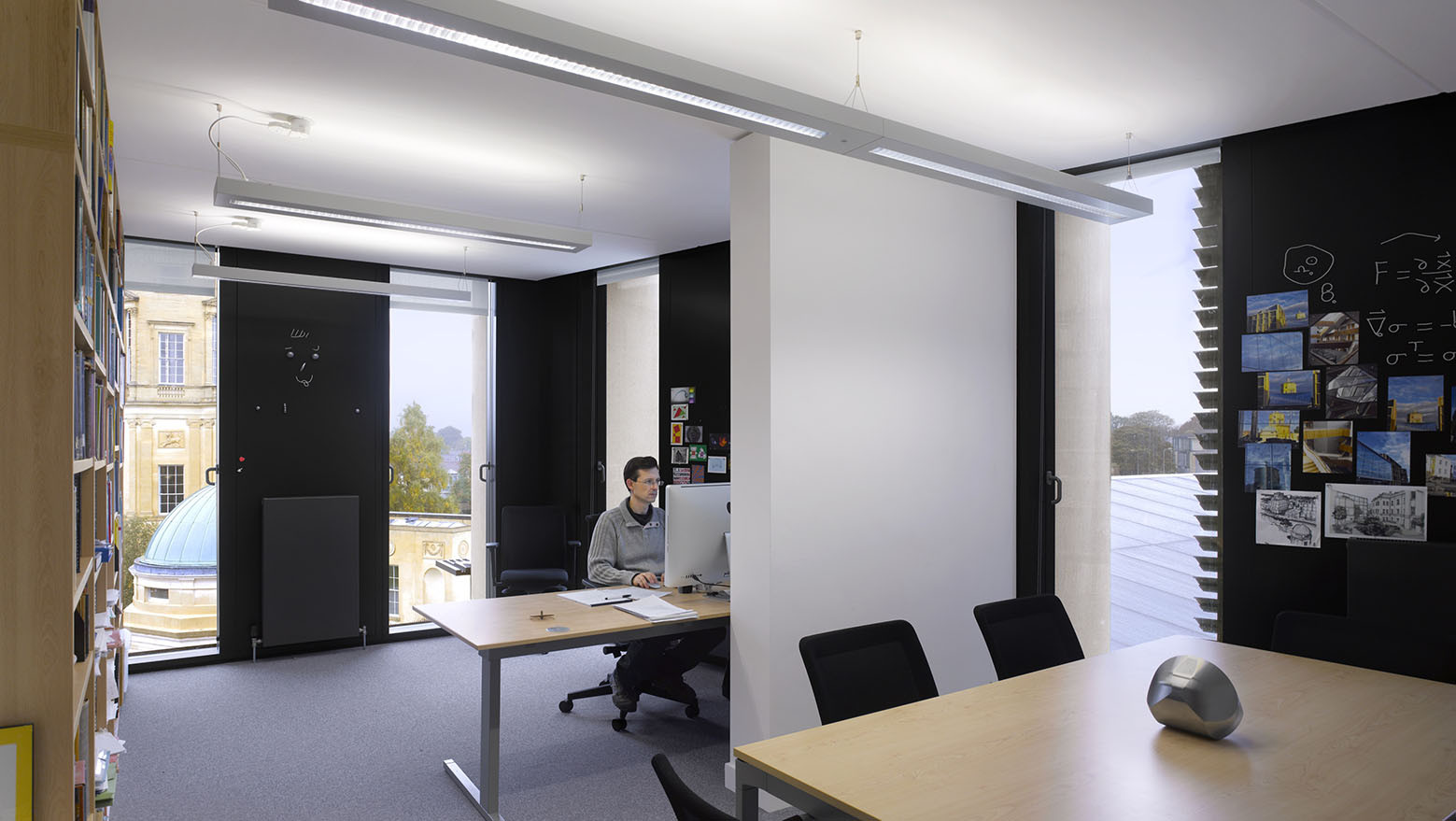
与许多新建的办公室不同的是,这些办公室是作为灵活的开放式空间建造的,数学学院采用了一种更传统的教学模式,以适应所做工作的类型。由于数学家通常需要无噪音和无干扰的空间,教职员的办公室是隔音的,以保持所需的分贝水平。建筑物外部的自动遮阳百叶窗鳍尽量减少从外部进入建筑物的视野,同时保持视觉隐私,同时仍允许自然光和空气(通过可操作的窗户)进入。教职员工办公室布置在中庭周边,以便在不需要隐私的情况下,相邻的公共房间和非正式聚会空间可以促进与学生和其他教职员工的协作和临时会议。
Unlike many of the university’s newer offices, which are being built as flexible open-plan spaces, the Mathematical Institute has adopted a more traditional model for faculty offices, in keeping with the type of work performed. As mathematicians often require noise- and disturbance-free spaces, faculty members’ offices are acoustically isolated to maintain the required decibel levels. The self-shading louver fins on the building exterior minimize views into the building from outside, maintaining visual privacy while still permitting natural light and air (through operable windows) to enter. The faculty offices are arranged around the perimeter of the atrium, so that adjacent common rooms and informal gathering spaces can promote collaboration and impromptu meetings with students and other faculty, whenever privacy is not essential.
© Will Pryce
c.威尔·普莱斯
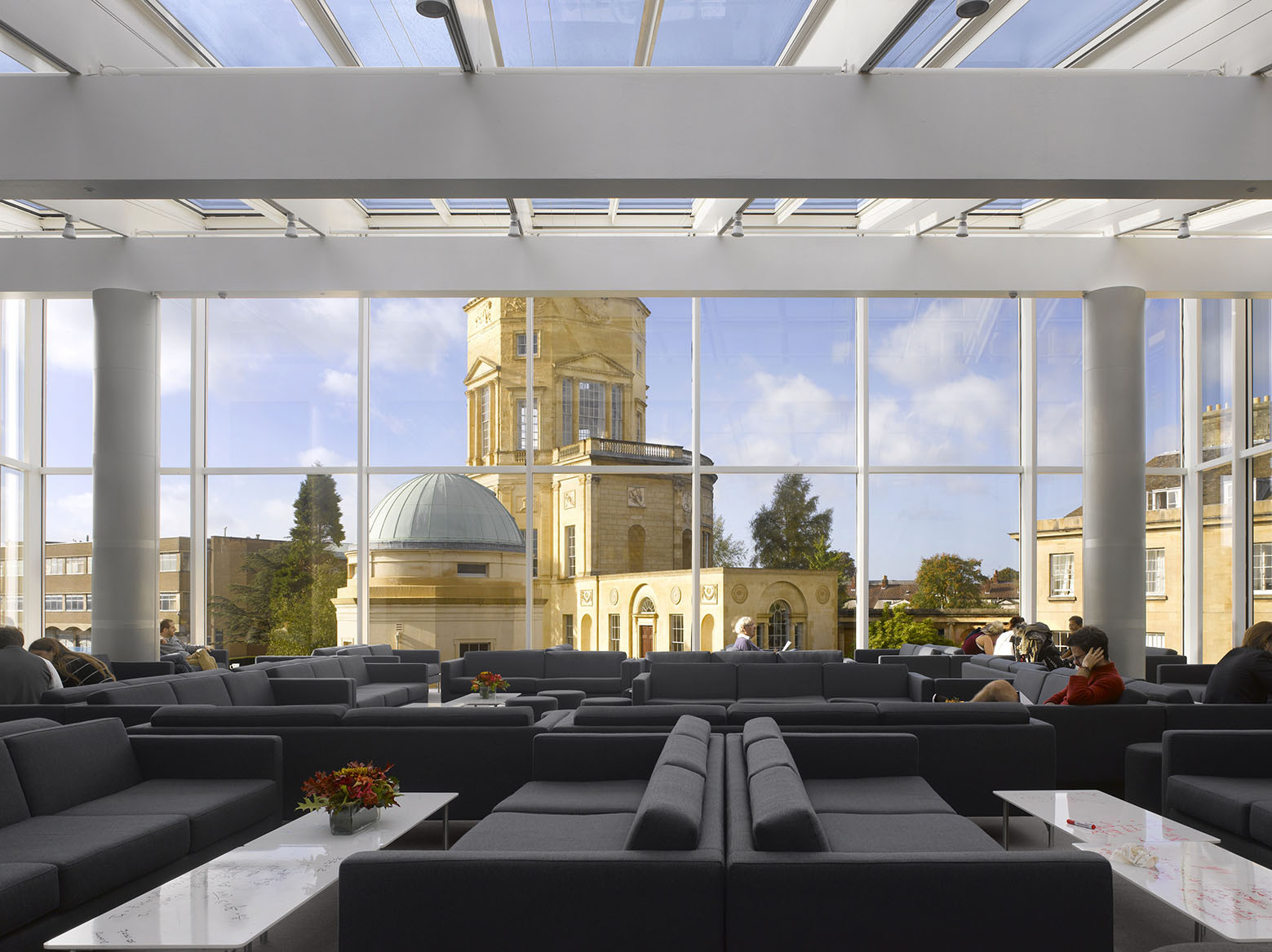
这些办公室设在四层地上,而数学学院的所有教学区域则位于地下夹层。自然光从中庭进入阁楼,教学室集中在大型开放空间周围,作为学生的学习和社交场所。为学生和教师提供的自助餐厅进一步鼓励在这个开放的区域内进行社交和互动。为了将教学空间干扰降到最低,教室与建筑物的其他部分在声学上分开。
The offices are housed on the four aboveground floors, while all teaching areas for the Mathematical Institute are located on the below ground mezzanine level. Natural light enters the mezzanine from the atrium, where teaching rooms are grouped around the large open space, which serves as a study and social area for students. A cafeteria for students and faculty further encourage socializing and interaction in this open area. To keep teaching space disturbances to a minimum, lecture theaters are acoustically separated from the rest of the building.
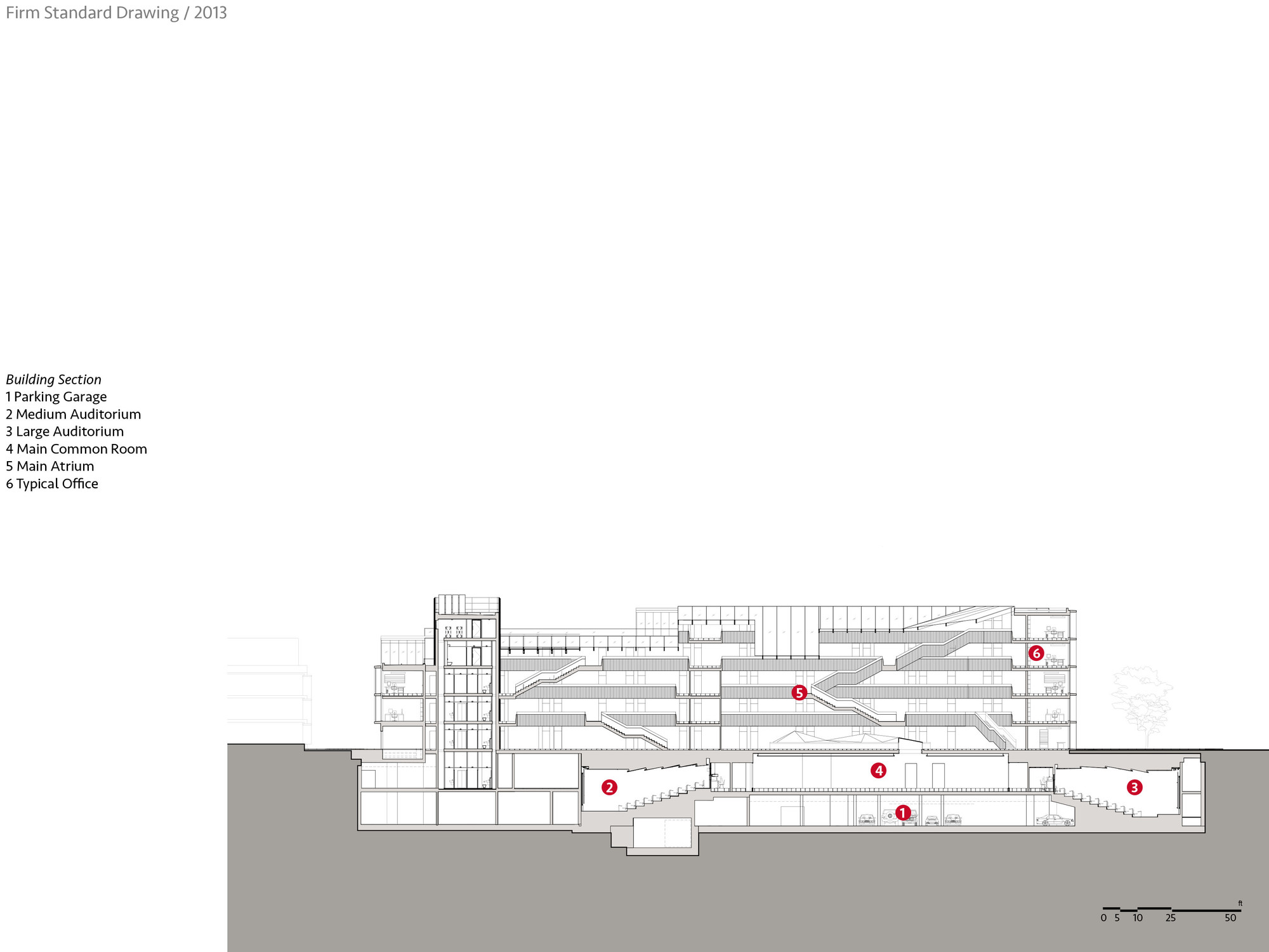
绿色屋顶和屋顶露台为非正式讨论或思考创造了额外的室外空间,并增强了总体规划的可持续性目标:种植了刚玉的地表增加了生物多样性,改善了建筑物的能源性能,并有助于控制雨水径流。
A green roof and roof terrace creates additional outdoor space for informal discussion or contemplation, as well as enhancing the sustainability goals of the master plan: the sedum-planted surface increases biodiversity, improves the building’s energy performance and helps control rainwater runoff.
© Will Pryce
c.威尔·普莱斯
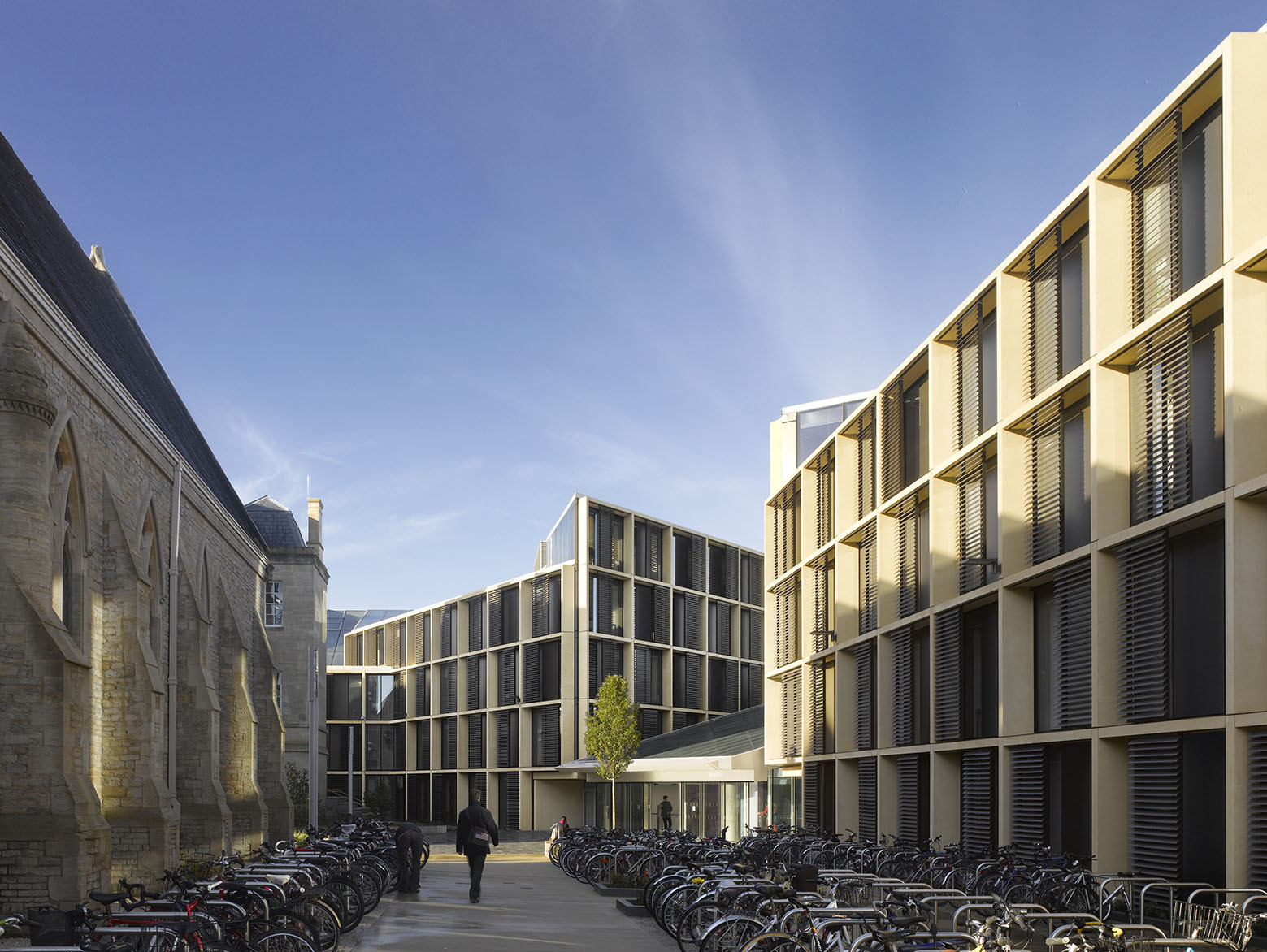
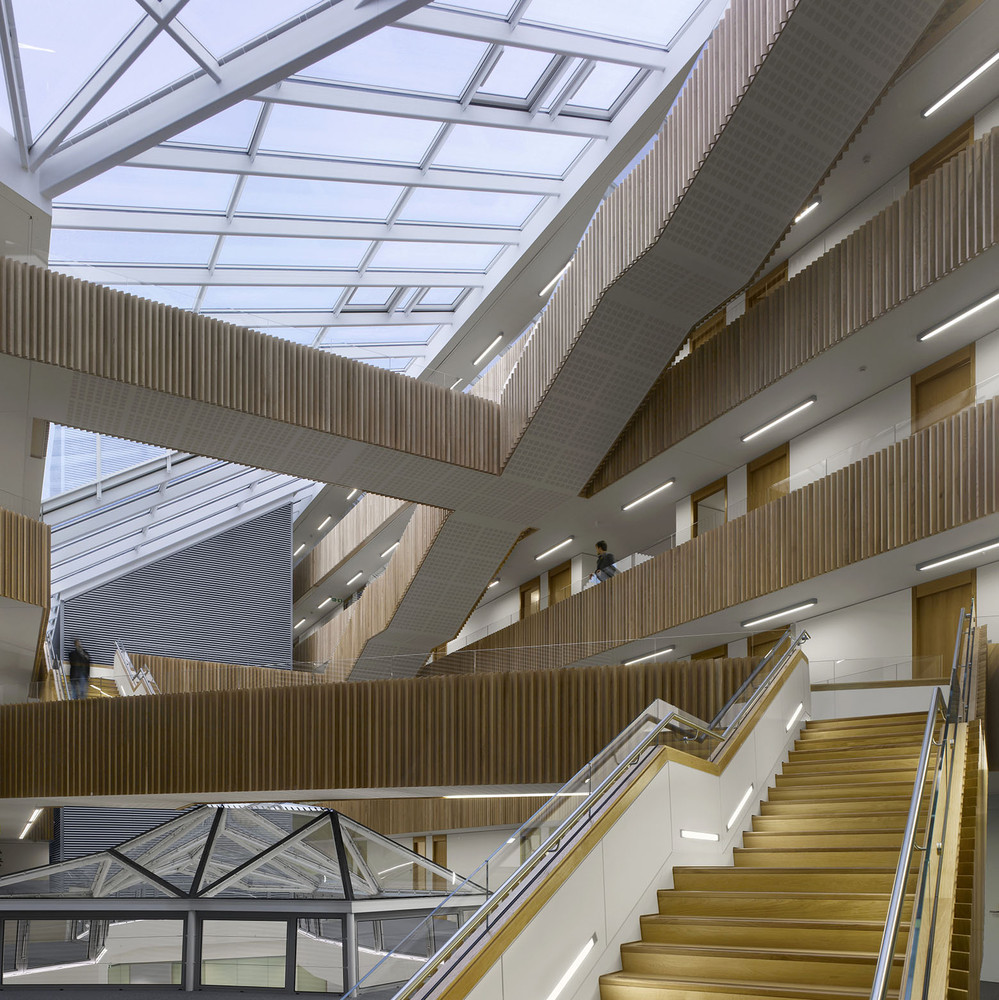
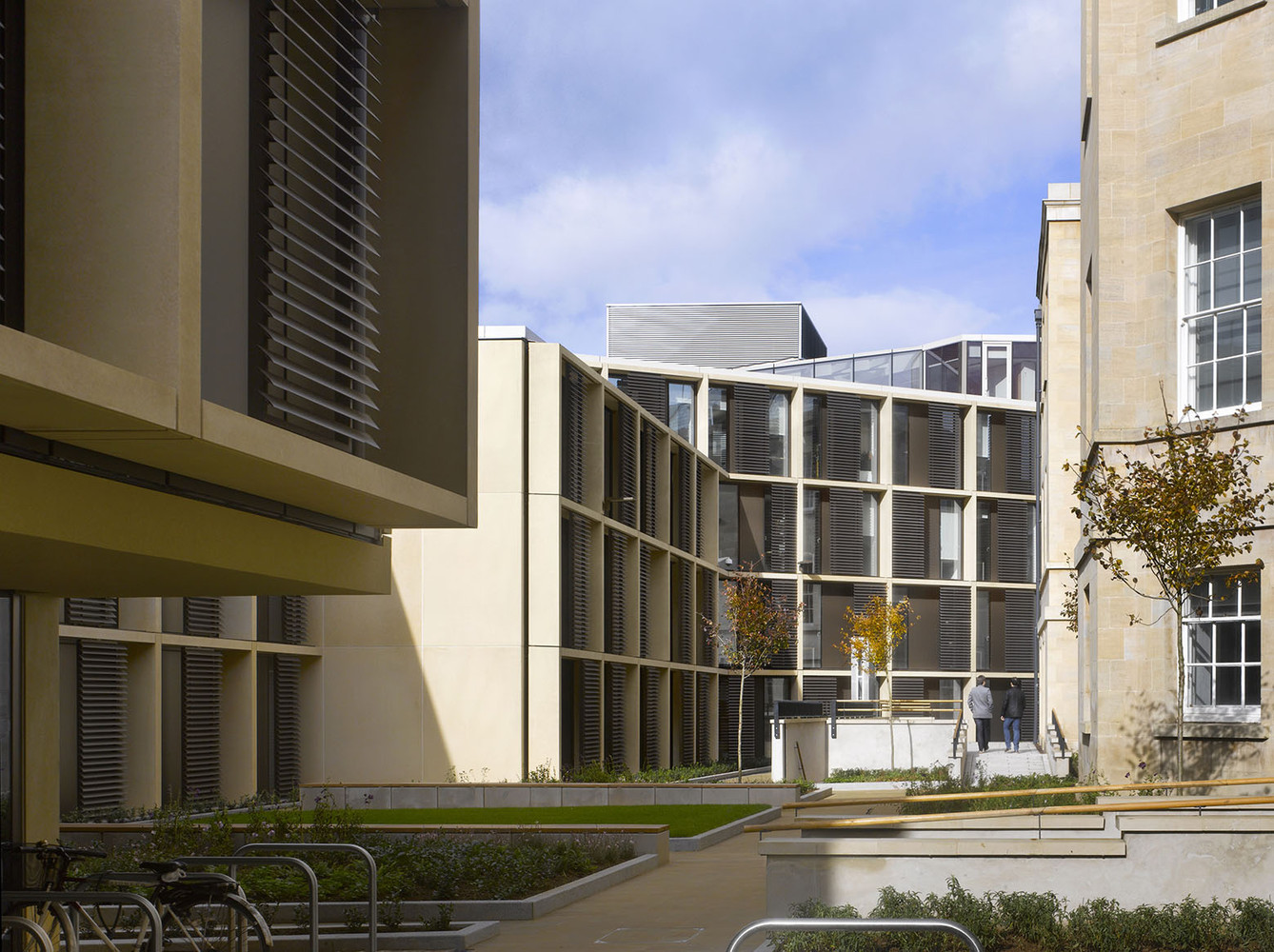

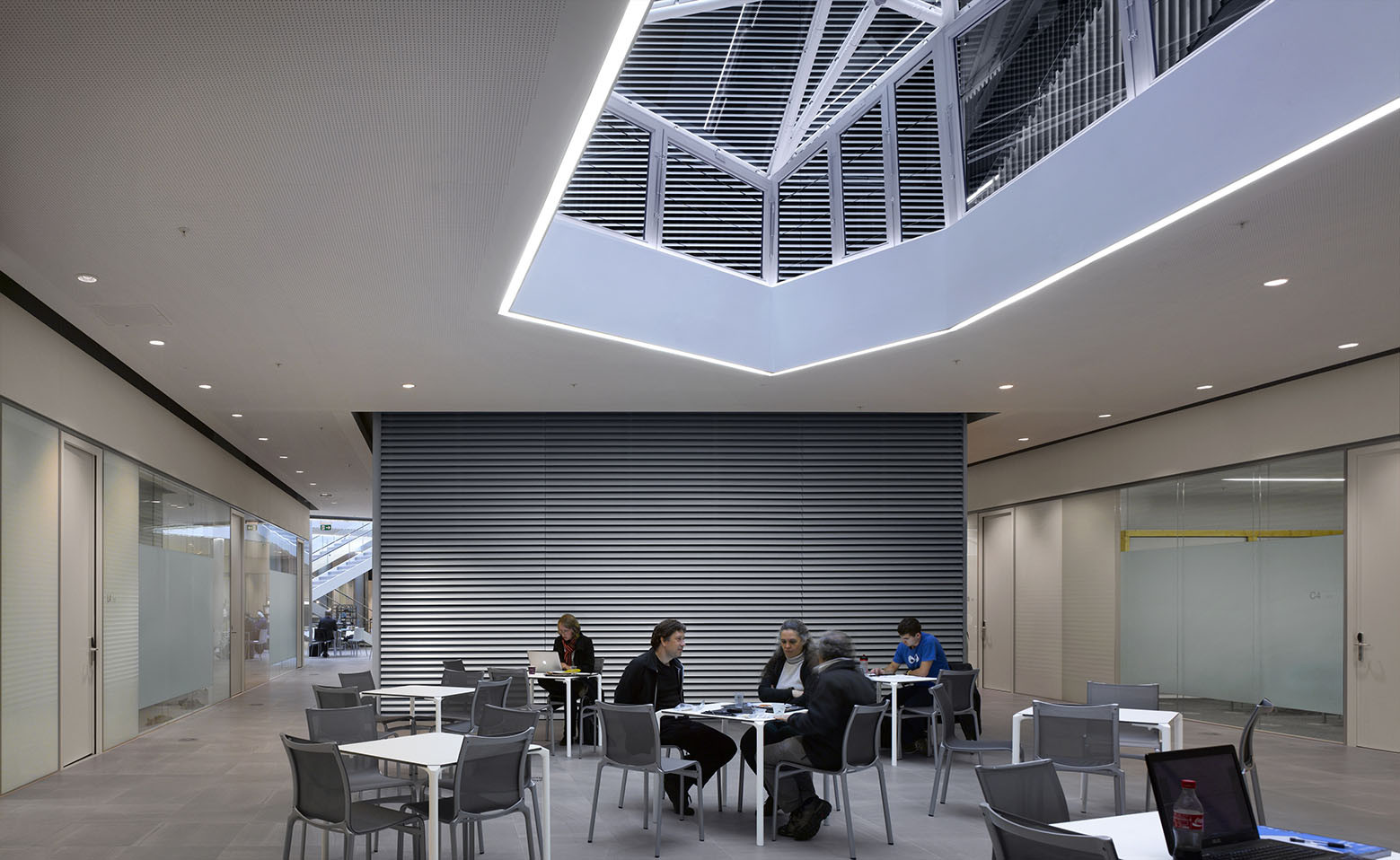

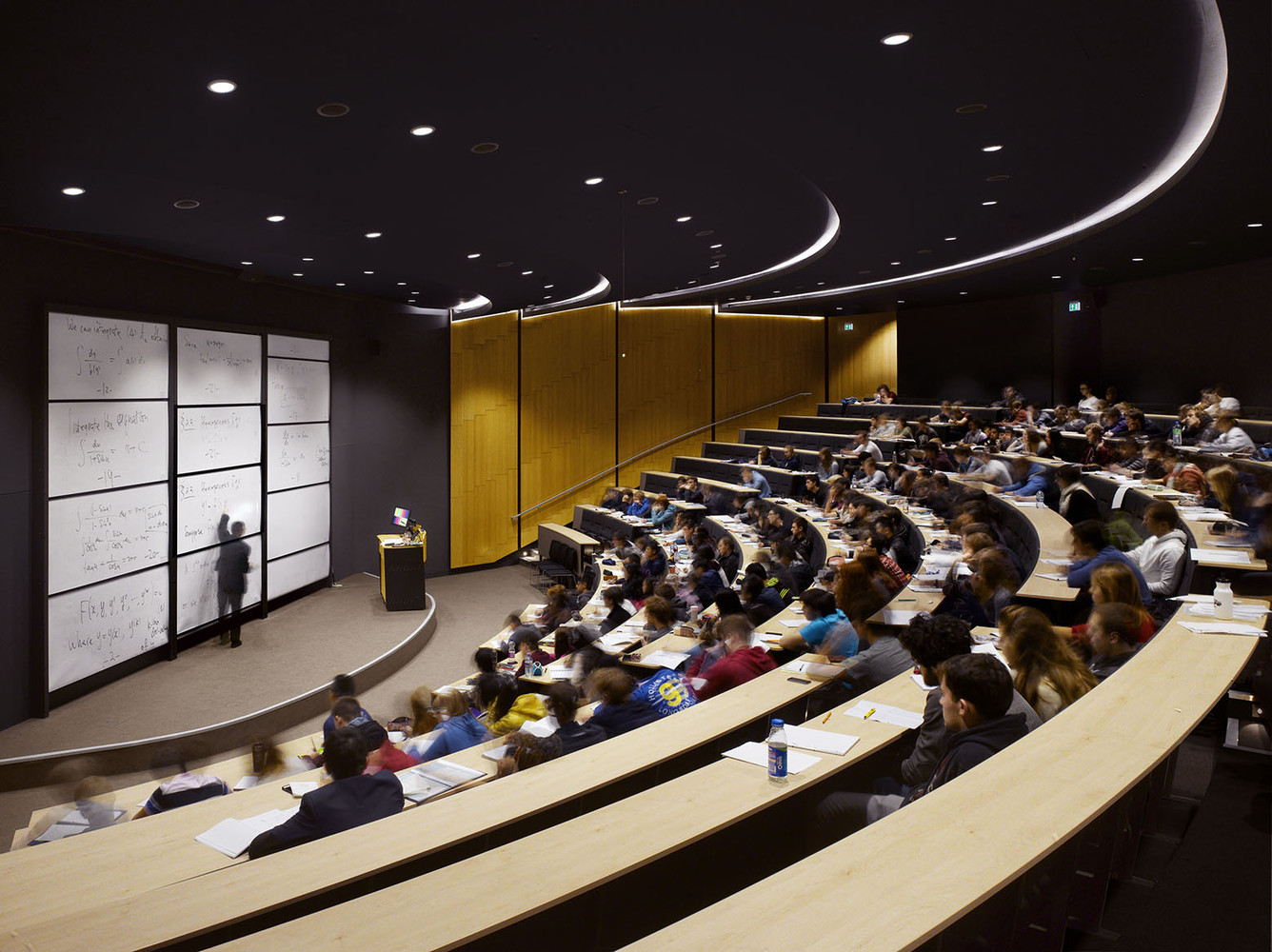



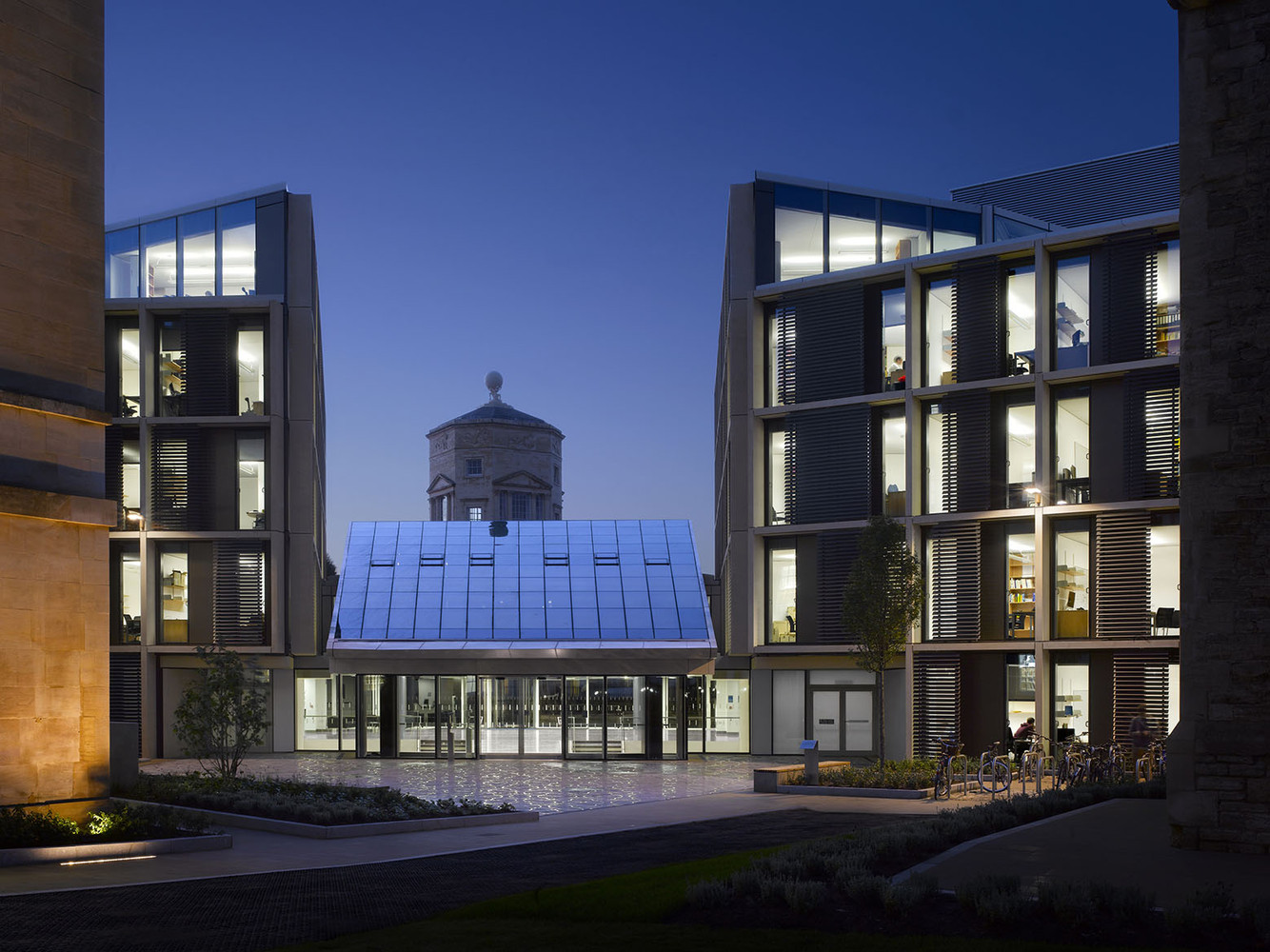


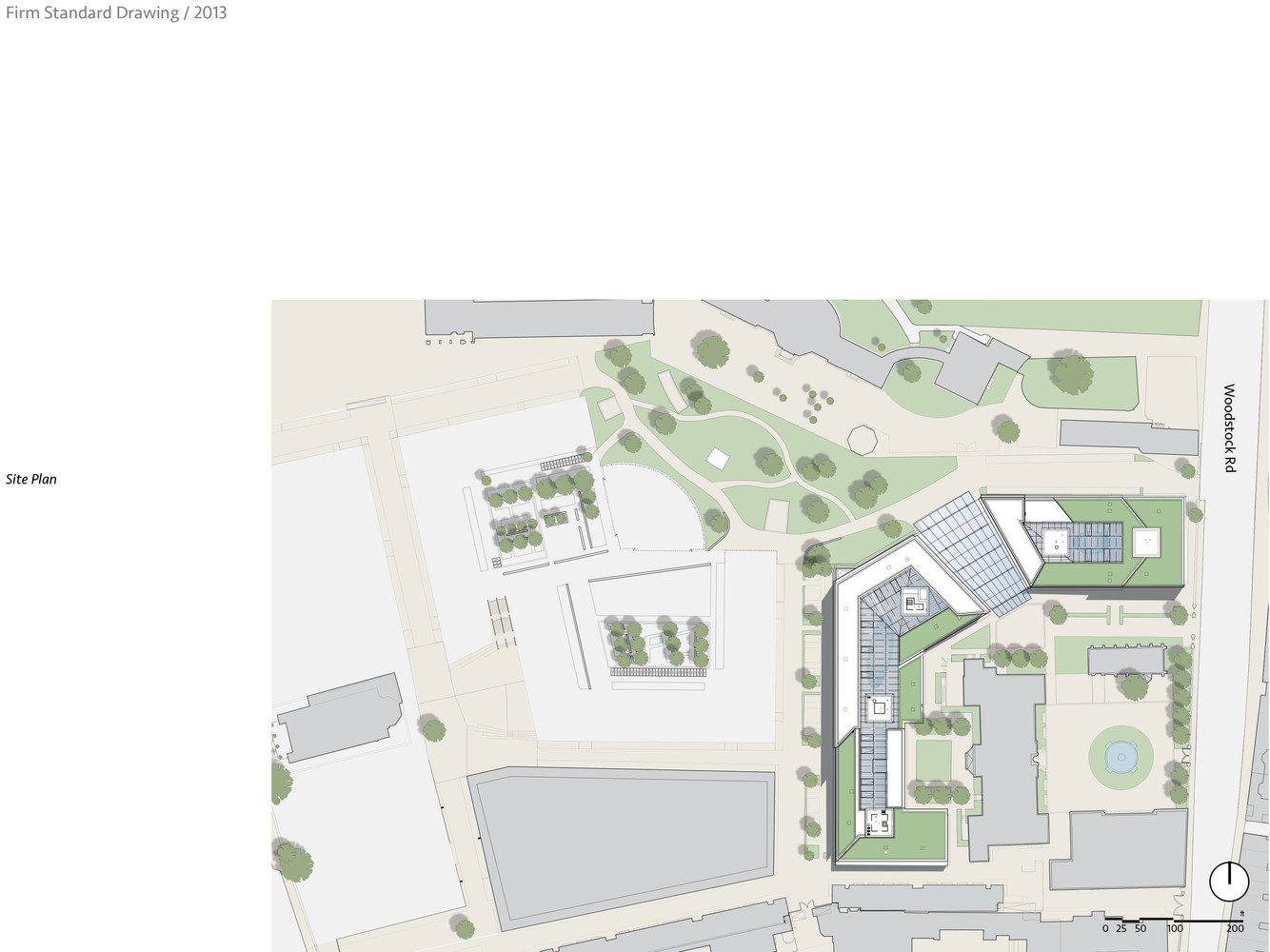


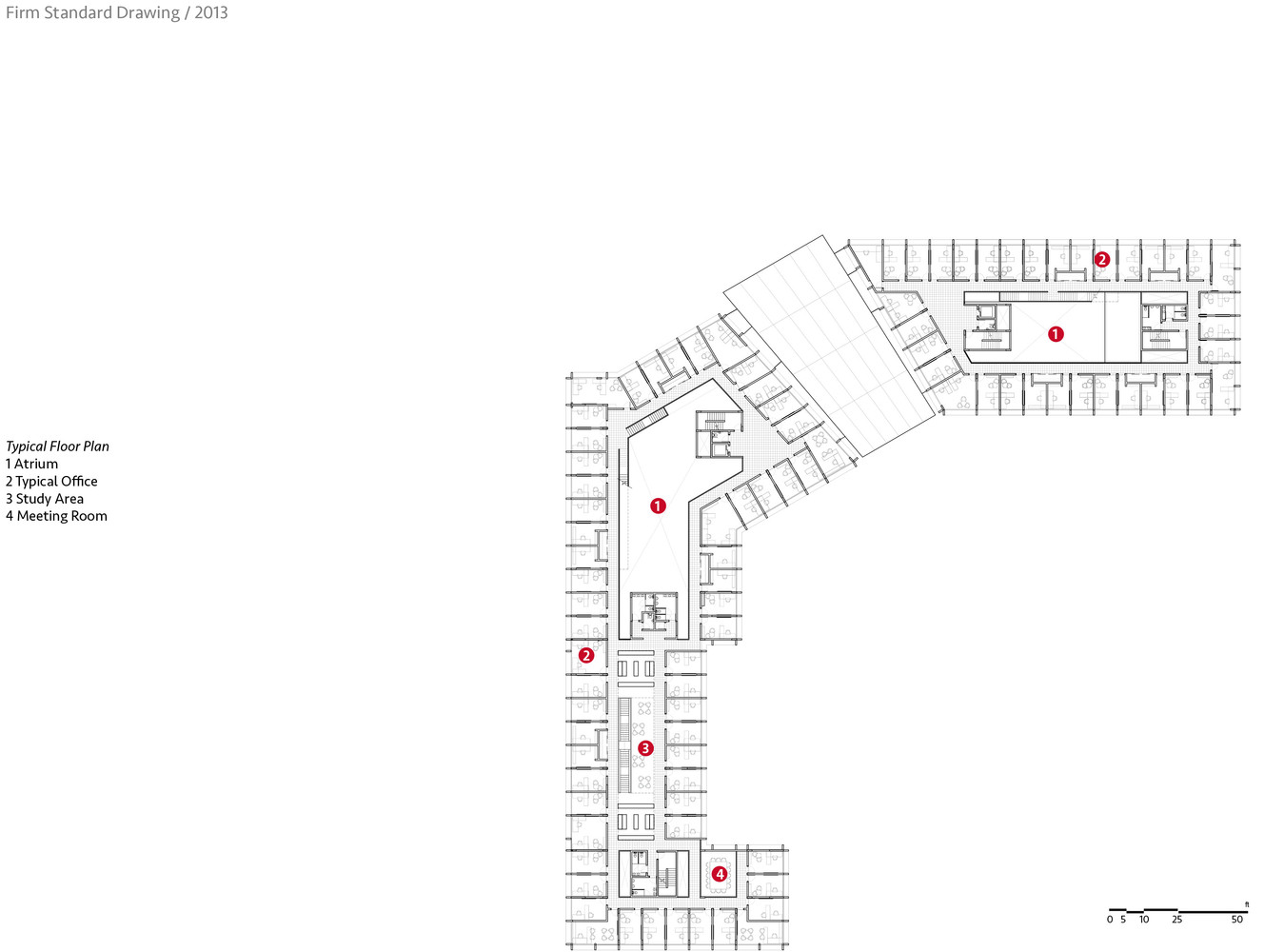


Architects Rafael Viñoly Architects
Location Mathematical Institute, University of Oxford, Saint Giles’, Oxford OX1 3LB, United Kingdom
Category University
Area 24400.0 sqm
Project Year 2013
Photographs Will Pryce
